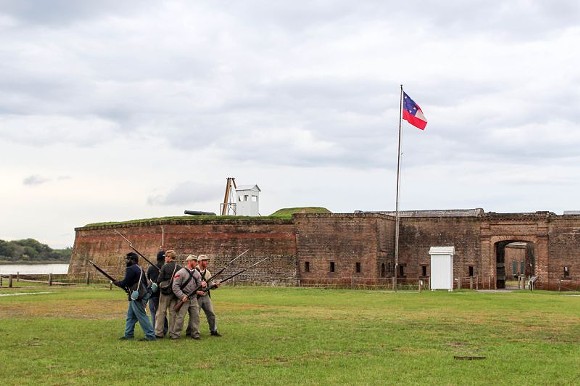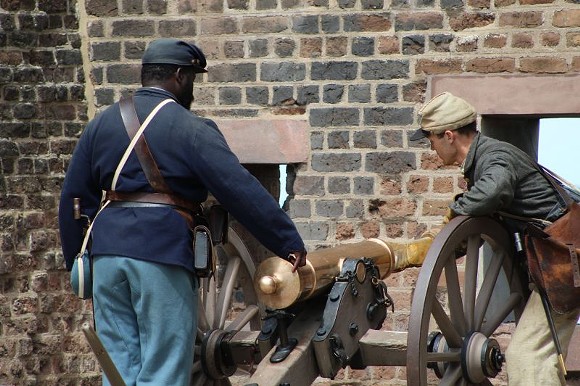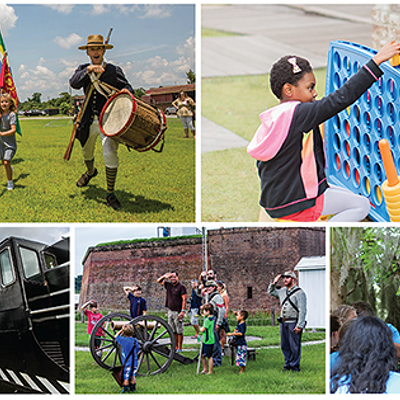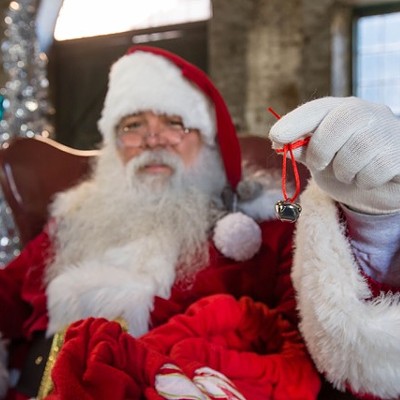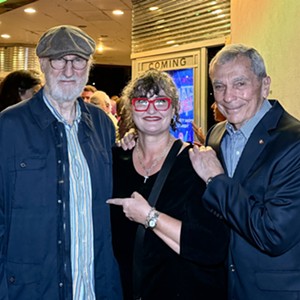WITH ITS dramatic daily cannon fire and up-close-and-personal views of passing freighter ships, it’s no wonder Old Fort Jackson is a huge hit with tourists.
More than 50,000 people a year find their way to the historic brick military bunker that sits strategically atop Salter’s Island on the banks of the Savannah River, and hundreds leave rhapsodic online reviews about the beauty of the site and its dynamic programming.
The 208 year-old landmark—one of the oldest brick forts on the East Coast—has garnered a solid four and half stars on Trip Advisor and is ranked number 12 out of 184 things to do in Savannah.
Yet in spite of Old Fort Jackson’s prominence and charm, few locals take the live oak-lined detour off East President Street. In fact, a lot of us don’t even know it exists.
“When most Savannah residents think about our old forts, they think of Pulaski or McAllister,” laments OFJ site administrator Brian Lee. “We want to change that.”
Lee oversees a robust schedule of historic reenactments that cover the fort’s role in protecting the vital shipping channel and General Oglethorpe’s urban jewel through three wars—the American Revolution, the War of 1812 and the Civil War.
To entice local families to check out the fascinating history in their own backyard, Lee and his cohorts came up with “Chatham Days,” offering anyone with a valid photo ID that shows a Chatham County address to receive “buy one-get one free” admission through January 31.
First built as a mud battery in 1778, the bricks were piled for the current structure in 1808 at the behest of President Thomas Jefferson. A moat and drawbridge were added after the war of 1812, and it served as defense headquarters for the Confederacy until the graycoats abandoned it in advance of Sherman’s terrifying 1864 “March to the Sea.”
The last soldiers to officially occupy Fort Jackson were the African American Union troops from the 55th Massachusetts Volunteer Infantry.
Like nearby Fort McAllister and Fort Pulaski, Fort Jackson helped defend Savannah, but unlike those other ramparts, it was never captured.
“People assume because it didn’t fall that nothing ever happened here. That couldn’t be further from the truth,” assures Lee, describing how soldiers were burning papers and readying ammunition as they watched plumes of smoke from Fort Pulaski.
Lee and a team of professional historic interpreters lead visitors through an ever-changing, interactive program that goes beyond following around someone carrying a musket. Visitors don’t just hear the boom of the cannon ball, they get to hold them and imagine what it was like to carry it for 20 miles.
And there’s no need to wonder how heavy and uncomfortable those wool uniforms must have been during those pre-AC Savannah summers—you can don a coat and hat and find out for yourself.
“Our focus is to get guests involved. Not just, ‘hey, look at this.’ We want to engage the senses,” explains Lee.
“We aim to bring a personal connection to Savannah’s military history and the soldiers that served here, to put you in their shoes—literally.”
It’s no surprise that Old Fort Jackson includes its visitors into the action. The riverside grounds are under the umbrella of the Coastal Heritage Society, the non-profit organization that also oversees the Georgia State Railroad Museum, the Savannah Children’s Museum, and the Savannah History Museum, a trifecta of interactive historic sites known as Tricentennial Park on MLK Blvd.
CHS also manages the Pin Point Heritage Museum, providing a firsthand experience of Gullah/Geechee culture.
The recent excavation of the CSS Georgia might give Old Fort Jackson even more cachet with history buffs near and far. CHS hopes that the scuttled ironclad warship will find a final resting home at the fort after the Texas A&M archaeology team finishes the job of conserving and cataloguing the salvage.
The organization issued a statement last year calling Savannah “the most appropriate and valuable place to develop the exhibition of the vessel’s remains.”
So far, no decision has been made about the fate of the CSS Georgia.
“It’s really too early to tell what will happen with the ship,” says Lee. “We’re still years away from conservation. We’re not ready for it yet, but I’m sure we’ll be prepared to accept it.”
In the meantime, there is plenty to keep the public “edutained” with a host of special programs throughout the year, including an homage to Savannah’s citizen soldiers this January. Regular fundraising events include a campout under the stars in March, an elegant silent auction gala inside the fort and the ongoing “Support the Fort” program that endeavors to restore two 18th-century artillery pieces that once protected Savannah from their mounts on the river.
Old Fort Jackson is open seven days a week from 9am to 5pm, and regular admission is $7 per adult and $4 for kids 12 and under. The Chatham Days two-fer allows a family of four to touch the cannons, try on the uniforms, hear enthusiastic storytelling and ramble the grounds for $11—a pretty good deal for a fun weekend afternoon.
It might even lead locals to consider a CHS annual membership ($45 individual, $20 students, $100 household) so they can have unlimited access to all five museums all year long.
Living close by also has its advantages; out-of-towners only get one chance to experience Old Fort Jackson, but you could visit ten times in 2016 and not hear the same story twice.
“We change it up pretty much every day,” promises Lee.
“We have 272 years of history here. We have a big story to tell.”

